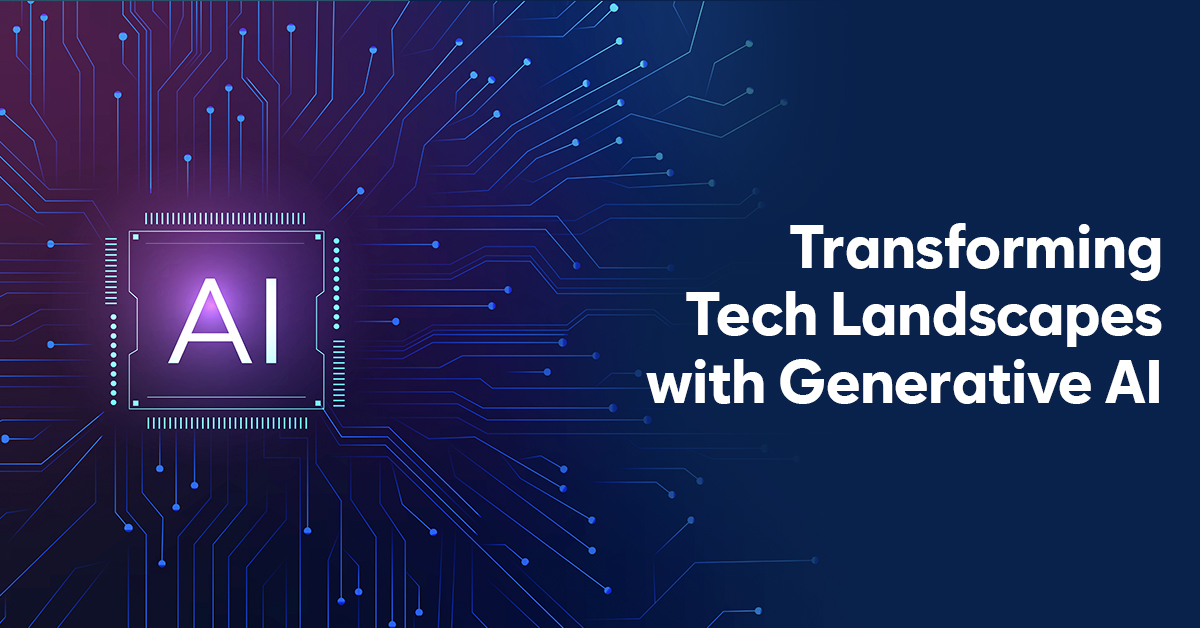In the world of technology, certain breakthroughs have the power to reshape the industry and capture the imagination of tech leaders worldwide. Generative AI, often epitomized by OpenAI’s ChatGPT, is one such groundbreaking innovation that has emerged on the scene. Its arrival has sparked a flurry of excitement, prompted swift responses from tech giants, and become a central theme at tech conferences globally. This blog post delves into the current state of generative AI, its multifaceted potential, and the noteworthy concerns surrounding its adoption.
The Evolving Landscape of Generative AI
Generative AI is relatively new but has already made significant strides since its introduction. It represents a fundamental shift in how we approach tasks and challenges in the tech world. While it only made its first appearance in November 2022, seasoned IT professionals are bullish about its potential.
Paul Coby, an experienced IT chief, sees it as a game changer at its core. He likens it to the “third digital revolution” following mainframe computing and the internet. Its impact could be profound, as it can be applied across various use cases, from content generation to product design, visualizations, and even code analysis.
David Ivell, the Chief Product and Technology Officer at Team Teach, is among those who have already harnessed this AI’s capabilities. His company has been actively exploring its potential impact, opportunities, and risks. Workshops and proof-of-concept initiatives have been instrumental in their journey towards integration.
Market Perspectives on Generative AI
Generative AI is not just a theoretical concept; it’s already making waves in the tech world. As businesses and organizations explore its applications, market analysts are closely monitoring its impact. It’s viewed as a valuable research tool and a source of initial answers, but questions remain about how it will complement or replace human involvement, especially in information-related tasks.
Neil Ward-Dutton, a VP at IDC, highlights the disparity between generative AI usage and business strategy. While many organizations are experimenting with it, clear policies and strategies are often lacking.
Implementing Generative AI: Best Practices
Successful implementation of this AI often hinges on a few key best practices:
- Cross-Functional Collaboration: Collaboration across teams is crucial to harness the full potential of generative AI.
- “Try Before You Buy”: Piloting projects and testing the waters before full-scale deployment is a wise approach.
- Learning from Experience: Continuous learning from real-world use cases helps refine the implementation process.
- Integration into Existing Tools: Leveraging generative AI through tools integrated into existing applications can provide a smoother transition.
Challenges and Concerns
While the promise of this AI is undeniable, it also faces significant challenges:
- Safety and Accuracy: Instances of incomplete or inaccurate AI-generated content highlight the need for human oversight.
- Regulatory and Legal Frameworks: The regulatory landscape is still evolving, and concerns about data privacy and security persist.
- Intellectual Property Risks: Organizations must be cautious about the potential leakage of their intellectual property when using public generative AI services.
Generative AI’s Potential Impact Areas
Generative AI’s versatility opens up numerous potential impact areas, including research, design, content creation, code generation, and customer support. It promises to revolutionize various industries, paving the way for innovation and efficiency.
The Catalyst for Wider AI Adoption
Some experts believe that this AI is a catalyst for broader AI adoption. It’s envisioned as a technology that will usher in an era where AI is seamlessly integrated into every aspect of business operations, transforming data utilization and value extraction.
Human-AI Collaboration: A Harmonious Future
Amidst the excitement surrounding AI, the importance of humans working alongside AI is a resounding theme. AI is seen as a complement to human capabilities, enhancing productivity, and problem-solving. The synergy between human creativity and AI’s analytical abilities is valued.
In conclusion, generative AI has arrived on the tech scene with a bang, promising to transform industries and redefine how we approach complex challenges. While it offers immense potential, responsible implementation is crucial. Collaboration between humans and AI, coupled with evolving regulatory frameworks, will pave the way for a future where generative AI plays a pivotal role in our technological landscape.




